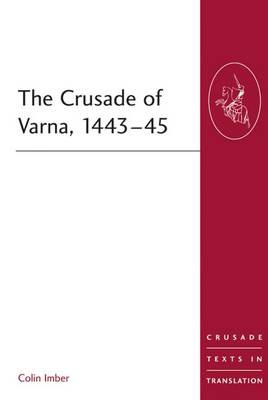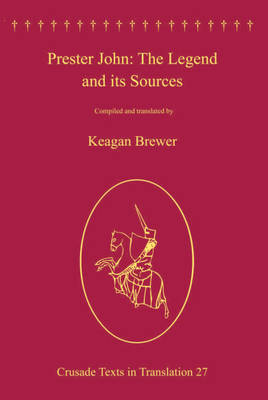Crusade Texts in Translation
3 total works
The Chanson des Chetifs and Chanson de Jerusalem
The First Crusade was arguably one of the most significant events of the Middle Ages. It was the only event to generate its own epic cycle, the Old French Crusade Cycle. The central trilogy at the heart of the Cycle describes the Crusade from its beginnings to the climactic battle of Ascalon, comprising the Chanson d'Antioche, the Chanson des Chetifs and the Chanson de Jerusalem. This translation of the Chetifs and the Jerusalem accompanies and completes the translation of the Antioche and makes the trilogy available to English readers in its entirety for the first time.
The value of the trilogy lies above all in the insight it gives us to medieval perceptions of the Crusade. The events are portrayed as part of a divine plan where even outcasts and captives can achieve salvation through Crusade. This in turn underlies the value of the Cycle as a recruiting and propaganda tool. The trilogy gives a window onto the chivalric preoccupations of thirteenth-century France, exploring concerns about status, heroism and defeat. It portrays the material realities of the era in vivid detail: the minutiae of combat, smoke-filled halls, feasts, prisons and more. And the two newly translated poems are highly entertaining as well, featuring a lubricious Saracen lady not in the first flush of youth, a dragon inhabited by a devil, marauding monkeys, miracles and much more. The historian will find little new about the Crusade itself, but abundant material on how it was perceived, portrayed and performed.
The translation is accompanied by an introduction examining the origins of the two poems and their wider place in the cycle. It is supported by extensive footnotes, a comprehensive index of names and places and translations of the main variants.
The Crusade of Varna of 1443-45 was one of the decisive events of the late Middle Ages. Following the temporary Union of the Greek and Latin Churches in 1439, Pope Eugenius IV created an alliance which aimed to 'liberate' Byzantium and the Balkan Peninsula from the domination of the Ottoman Empire. The Ottoman Sultan, Murad II, held the Crusaders during the winter war of 1443, finally securing victory at Varna in November, 1444. The Crusade petered out in 1445 with the expedition of the Burgundian fleet on the Danube. More than any other single event, it was Murad's victory at Varna that secured Ottoman domination of the Balkan Peninsula, with consequences which are still apparent today.
Three important works, hitherto largely unnoticed in western historiography, provide eyewitness accounts of the dramatic events of 1443-45 from the Christian and the Muslim side: an anonymous Ottoman text on The Holy Wars of Sultan Murad; a section of the Anciennes Chroniques d'Angleterre by the Bugundian, Jehan de Wavrin, and a German ballad on the Crusade by Michel Beheim. These are presented here for the first time in English translation, supplemented by a series of shorter contemporary texts relating to the events of the crusade, with an introduction and annotation.
Prester John: The Legend and its Sources
The legend of Prester John has received much scholarly attention over the last hundred years, but never before have the sources been collected and coherently presented to readers. This book now brings together a fully-representative set of texts setting out the many and various sources from which we get our knowledge of the legend. These texts, spanning a time period from the Crusades to the Enlightenment, are presented in their original languages and in English translation (for many it is the first time they have been available in English).
The story of the mysterious oriental leader Prester John, ruler of a land teeming with marvels who may come to the aid of Christians in the Levant, held an intense grip on the medieval mind from the first references in twelfth-century Crusader literature and into the early-modern period. But Prester John was a man of shifting identity, being at different times and for different reasons associated with Chingis Khan and the Mongols, with the Christian kingdom of Ethiopia, with China, Tibet, South Africa and West Africa. In order to orient the reader, each of these iterations is explained in the comprehensive introduction, and in the introductions to texts and sections. The introduction also raises a thorny question not often considered: whether or not medieval audiences believed in the reality of Prester John and the Prester John Letter.
The book is completed with three valuable appendices: a list of all known references to Prester John in medieval and early modern sources, a thorough description of the manuscript traditions of the all-important Prester John Letter, and a brief description of Prester John in the history of cartography.


